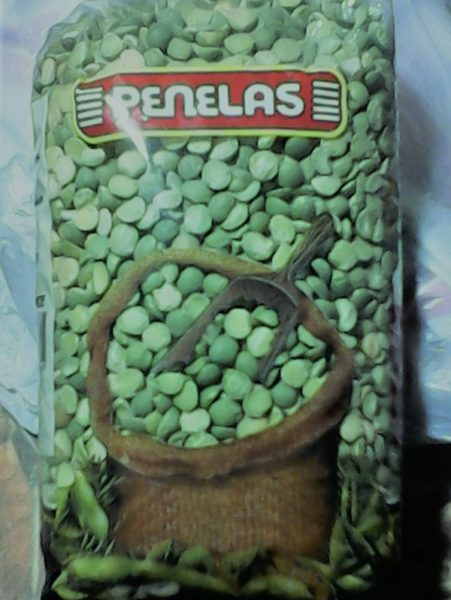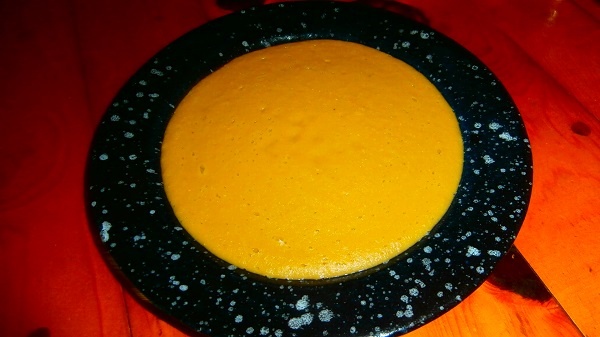Cuban’s Love-Hate Relationship with “Chicharos”
By Nike

HAVANA TIMES – In Cuba, chícharo or split chickpeas, are considered one of the most nourishing foods that exist. It is famous for being the grain with the highest protein content, and is considered king of the legume family.
I don’t see it in the same light. I’m not going to deny its nutritional properties, but I have dedicated myself to studying nutrition and there are other legumes that beat it and are even more flavorful. I think it is famous among us Cubans because of the love-hate relationship we have, due it being imposed on us.
In the 1970s, when I was a girl, chicharo was the only legume that came via the ration booklet. It was cooked at home almost every day, and when we didn’t cook it, the smell of chicharo cooking at our neighbor’s home would invade our own.
This made the impression that we were eating it all the time even stronger, and I’d ask my mother not to cook them even when we hadn’t eaten them for a day or two. When that happened, I would be surprised by the same response: “We haven’t eaten chicharos for three days,” she’d say.

I have the image of my mother draining the yellow peas and blending them with a hand blender so we could eat them easier, while the kitchen walls would be splattered with puree and her too.
This dish is known here in Cuba as San German puree. I have always thought that if this saint were to ever discover that we Cubans gave chicharo puree his name, he would be proud. Although maybe not so much if he were to hear the curse words my mother uttered under her breath every time she blended that goddamn pea.
There are two main kinds of chicharo in Cuba. The yellow one, which is not only the most widely found and consumed, but is also the favorite of pigeons. The other variety is called verde picadito (split green).
People like the green ones better and they are the hardest to find. Right now, “verdes picaditos” are being sold in USD stores, and a 1-lb packet is being sold on the street for 125 Cuban pesos (over $5 USD at the official rate) The yellow kind come into bodega stores that sell rations every month, albeit in small quantities.
I mentioned Cubans’ love-hate relationship with chicharo earlier. I don’t understand the first part of this relationship, for I identify more with the second part, and I would never eat them again in my life if it were up to me. However, my family likes them and I cook them for them with great pleasure. Lucky for the saint, I have a blender, otherwise my children wouldn’t know that the puree I make them is called after a saint.

I have a Cuban friend living in Spain who buys a few pounds every time she comes to Cuba to take them back with her. The strange thing is that she prefers the bodega’s yellow kind. She says she really likes it.
I see it as a childhood trauma or one of these longings that we Cubans can’t ever let go of, even when living in other countries and they can eat whatever they want. In my opinion, longing is one of the strangest emotions we human beings have.
I can tell you that during the hellish period that was called “Special” here by the way (if they called the ‘90s crisis special, what name would they give the current crisis?) One day I was cooking yellow chicharos. I didn’t have gas at the time and I was using a kerosene stove, when I suddenly heard an explosion.
In order to save myself, I dived from the kitchen into the living room as if I were jumping into a swimming pool and I fell down in front of my kids, who were very little back then and were watching cartoons.
The explosion came from the pot where I was cooking the chicharos, so I could then turn them into the puree with a saint’s name. Those damned peas were stuck to the kitchen and dining room ceiling, and yellow shells would rain down over us. My eldest son usually compares my jump to one of Sandokan’s.

A week ago, we were celebrating my younger sister’s birthday and one of the presents she received was from a neighbor who brought her a pot of recently-cooked chicharos. I was sitting in the living room and the neighbor had barely set foot in the house with the pot, when I knew what it had inside. This hunch was immediately confirmed by the rejoicement that came from the kitchen.
As it was a gift, it had almost all of the ingredients of a good stew – malanga, pumpkin and some pieces of bacon floating about like a life jacket on the Titanic on top of the dense and yellow surface of the pot. In my silence, I remembred the beautiful years of my childhood covered in the eternal smell of chicharos.
All of Cuba’s crises can be gauged by chicharo consumption.
Right now, as I write these lines, I can hear the ferocious whistling of a pressure cooker and I can imagine how the yellow grains are coming to the boil inside and I get ready. I believe I won’t ever be able to give up cooking chicharos for as long as I live in Cuba, even though I’m afraid of them and don’t eat them. My kids love them.





